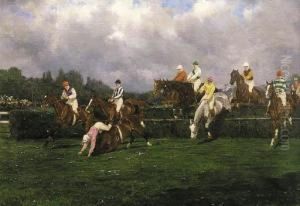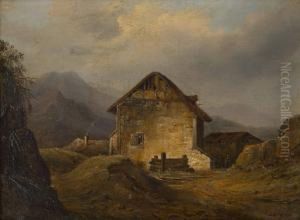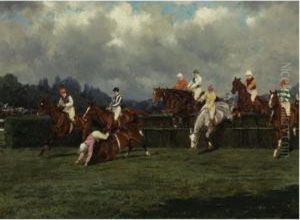Jean Baptist Van Marcke Paintings
Jean Baptiste Van Marcke de Lummen, known as Jean-Baptiste Van Marcke, was a 19th-century French painter renowned for his pastoral scenes and particularly for his realistic depictions of cattle. Born on August 9, 1827, in Sèvres, a commune located in the southwestern suburbs of Paris, France, he studied under the tutelage of the famous animal painter Troyon, which greatly influenced his style and subject matter.
Van Marcke showed a deep understanding of the anatomy of animals and a profound appreciation for the rural countryside. His early work was influenced by the Barbizon school, which focused on realist and naturalist depictions of rural life. He frequently exhibited his works at the Paris Salon, where he gained considerable recognition and acclaim for his paintings.
Throughout his career, Van Marcke developed a reputation for his ability to depict cattle with a sense of dignity and grace, set against the backdrop of lush pastures or in the tranquility of farm settings. His paintings often featured rich, textured brushstrokes and a harmonious palette that captured the natural beauty of the French countryside.
Jean-Baptiste Van Marcke's contribution to French art in the 19th century was significant, especially in the genre of animal painting. His works are characterized by their serene beauty and often evoke a sense of peacefulness and bucolic splendor. Van Marcke's artistic legacy is preserved in various collections and museums, where his work continues to be appreciated by art enthusiasts and collectors.
He died on March 28, 1890, in Hyères, France, leaving behind a body of work that continues to be celebrated for its artistic merit and contribution to the genre of animal painting.


